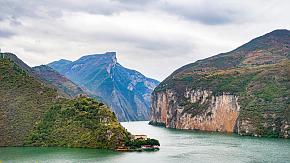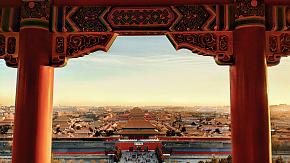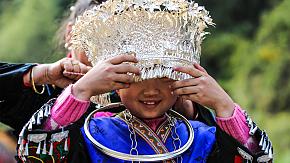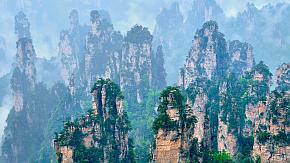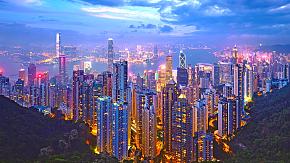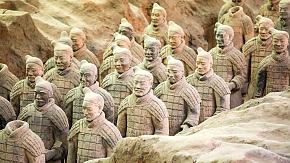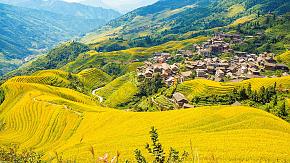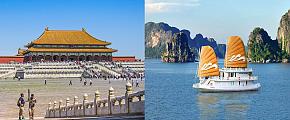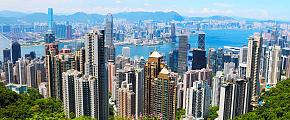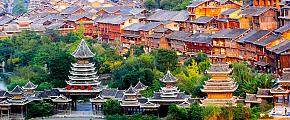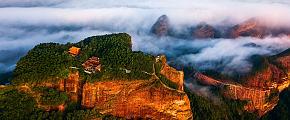Top 10 UNESCO World Heritage Sites in China (Updated in 2025)
By 2025, China already has 60 UNESCO World Heritage Sites, gained since it acceded to the world heritage convention in 1985, now ranking top in the world tied with Italy, including 41 cultural heritage sites, 15 natural heritage sites, and 4 cultural and natural heritage sites. Here is my list of 10 jaw-dropping heritage sites you must visit, and I hope you can get some inspiration to explore more of China.
- Great Wall
- Imperial Palaces of the Ming and Qing Dynasties
- Mausoleum of the First Qin Emperor
- Potala Palace
- Mogao Grottoes
- South China Karst
- Wulingyuan Scenic and Historic Interest Area
- Jiuzhaigou Valley Scenic and Historic Interest Area
- Mount Huangshan
- Mount Emei and Leshan Giant Buddha
- List of UNESCO World Heritage Sites in China
The Great Wall (Cultural)
Built during the spring and autumn period and the warring states period (around the 7th century BC), the Great Wall is considered the greatest construction project in the history of human civilization. It is the collective name of a series of fortifications stretching through 15 provinces and can be called a miracle on account of its vast engineering and majestic momentum. Now when you climb up the ruins of the Great Wall wriggling over the mountains, you can not only see the impressive watchtowers and spectacular natural scenery but also appreciate the great wisdom and courage of the Chinese nation in creating history.
The most familiar parts for travelers are the Badaling Great Wall, Mutianyu Great Wall, Simatai Great Wall, Jinshanling Great Wall, etc. Having a walk on the wall is a must for one's China trip. If you want to try something special, you can hike the off-the-beaten-path parts or have a night tour to enjoy its splendid night view. Whenever you come here and whichever part you choose, you can have different but unforgettable experiences.
Imperial Palaces of the Ming and Qing Dynasties in Beijing and Shenyang (Cultural)
Refering to the Forbidden City in Beijing and Mukden Palace in Shenyang, both serve as the center of State power in late feudal China. Founded in 1406, the Forbidden City has a nearly 600-year history. In the Palace of the Ming and Qing dynasties, 24 emperors lived here. Now it has turned into the "Palace Museum" with 1,862,690 historical relics and works of art. Known as one of the world's five palaces (Beijing Palace Museum, the Palace of Versailles, Buckingham Palace, the White House, and Moscow's Kremlin), it's also a prime example of ancient Chinese architecture due to its solemn but gorgeous buildings. The Imperial Palace of the Qing Dynasty in Shenyang consists of 114 buildings that retain typical features of traditional folk residences of the Manchu people and integrates the architectural arts of the Han, Manchu, and Mongolian ethnic cultures. This palace then became auxiliary to the Forbidden City after the capital was moved to Beijing.
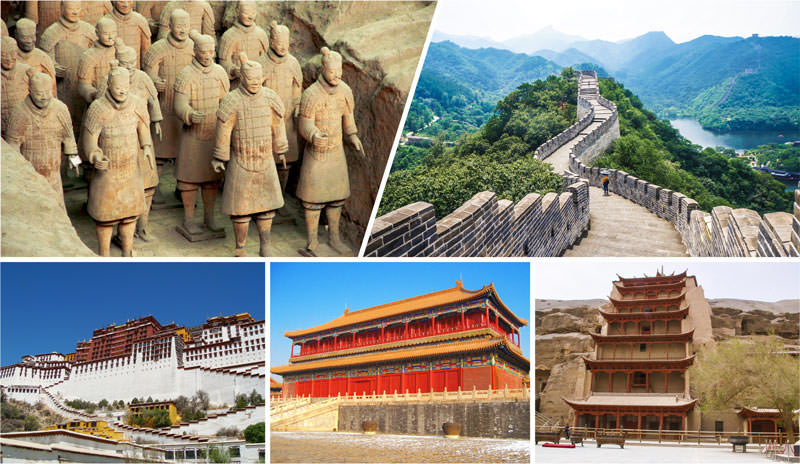 Cultural heritage sites: The Terra-Cotta Warriors, the Great Wall, the Potala Palace, the Forbidden City and the Magao Grottoes
Cultural heritage sites: The Terra-Cotta Warriors, the Great Wall, the Potala Palace, the Forbidden City and the Magao Grottoes
The Mausoleum of the First Qin Emperor (Cultural)
The Mausoleum of the First Qin Emperor is the oldest and largest imperial tomb in Chinese history. Since 1974, three pits have been found around 1.5 km / 1 mile east of the cemetery, and 8,000 terracotta warriors and horses, 100 chariots and tens of thousands of weapons have been unearthed. The costumes, expressions, hairstyles, and gestures of each terracotta warrior are different, revealing the personality and strong characteristics of the Qin people. You can hand-make mini terracotta warriors there and take them home for your family.
The Potala Palace (Cultural)
The Potala Palace is the highest ancient building in the world and also the largest and most complete ancient palace complex in Tibet, consisting of a magnificent collection of palaces, castles and monasteries. The Potala Palace was originally built by Songtsan Gambo of the Tubo to marry Princess Chizun and Wencheng, then it became the palace of the Dalai Lamas and the site for holding major religious and political ceremonies. Nowadays it is the holy land of Tibetan Buddhism and countless pilgrims and tourists visit here every year. Read more: Tibet Travel Tips: A First-Timer's Guide.
The Mogao Grottoes (Cultural)
The Mogao Grottoes (Thousand Buddha Caves), the largest and best-preserved treasure house of Buddhist art in the world, are located on the eastern cliff of Mingsha Mountain, 25 km from Dunhuang city. First built in 366 AD, it formed a huge scale after the dynastic transition. With 735 caves, 45,000 square meters of murals and 2,415 mud-colored sculptures, the Mogao Grottoes site is a broad and profound comprehensive palace in art.
South China Karst (Natural)
Karst in Southern China is home to the most prominent types of karst landforms (such as spires and cones), as well as magnificent and peculiar landscapes such as natural bridges and giant sinkholes, making it be one of the most spectacular tropical - subtropical Karst landforms in the world. The best examples of South China Karst are Guilin Area in Guangxi, Stone-Forest Scenic Spot in Yunnan, Maolan National Karst Forest Nature Reserve in Guizhou and Wulong Area in Chongqing, which not only present the aesthetic value of nature to the world, but also witness the evolution of the earth. Read more: Incredible Natural Arches and Bridges in China.
Wulingyuan Scenic and Historic Interest Area (Natural)
Wulingyuan Scenic and Historic Interest Area, including Zhangjiajie National Forest Park, Suoxiyu Scenic Area, Tianzishan Scenic Area and Yangjiajie Scenic Area, is just like a natural maze, a geological museum, a forest kingdom, a garden of plants and a paradise for wild animals. You may feel like you're in a surreal world with thousands of towering pinnacles which was a major shooting location for the film Avatar.
Jiuzhaigou Valley Scenic and Historic Interest Area (Natural)
As the first nature reserve in China whose main purpose is to protect the natural scenery, it is named after the nine Tibetan villages scattered throughout the area. There are many kinds of rare plants and animals, as well as rich ancient fossils, glacial landforms, sputtering waterfalls, springs and 108 colorful pools.
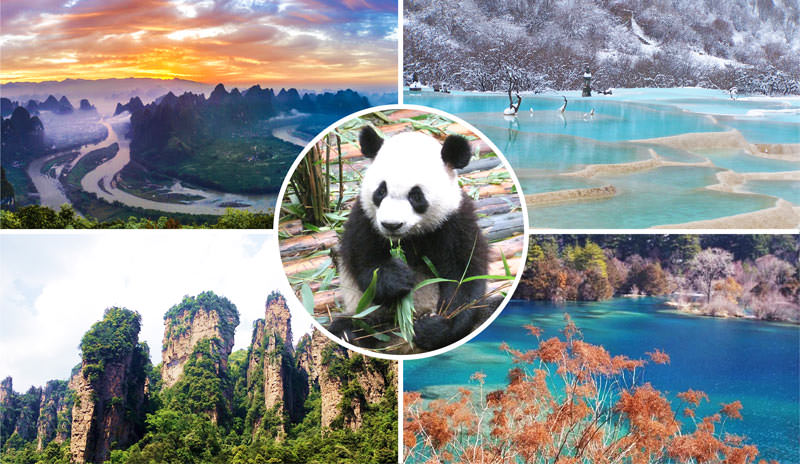 Natural heritage sites: Giant Panda Sanctuaries, Guilin, Wulingyuan, Jiuzhaigou and Huanglong Scenic and Historic Interest Area
Natural heritage sites: Giant Panda Sanctuaries, Guilin, Wulingyuan, Jiuzhaigou and Huanglong Scenic and Historic Interest Area
Mount Huangshan (Cultural and Natural)
Yellow Mountain was formed nearly 100 million years ago. Now it's well known for four breathtaking wonders: odd pines, weird rocks, a sea of clouds (best in winter), and hot springs. Huangshan also has significance in Chinese art and literature. In history, it has attracted many poets and celebrities who left a wealth of calligraphy and painting, literature, legends, etc. It also gave birth to the Huangshan painting style which created a large number of excellent works.
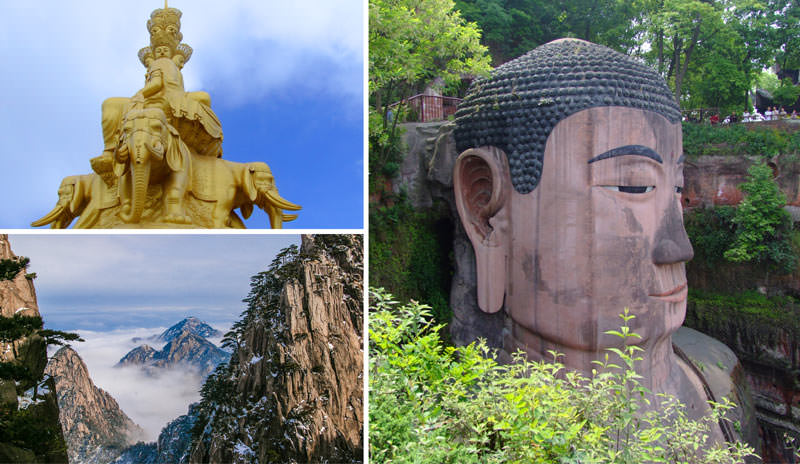 Cultural and natural heritage sites: Mount Huangshan, Mount Emei and Leshan Giant Buddha
Cultural and natural heritage sites: Mount Huangshan, Mount Emei and Leshan Giant Buddha
Mount Emei and Leshan Giant Buddha (Cultural and Natural)
Mount Emei and Leshan Giant Buddha are together listed as UNESCO Heritage Sites. Everything on Mt. Emei, such as architecture, sculpture, painting, ritual, and so on, all of which are closely related to Buddhist culture. In addition to Buddhist culture, it also has outstanding natural scenery. Leshan Giant Buddha is the largest stone Buddha in the world, with a height of 71 meters / 233 feet. The most amazing thing is the drainage system of the Buddha, which is very cleverly constructed to prevent the Buddha from being eroded by the rain.
List of UNESCO World Heritage Sites in China (Updated in 2025)
|
Time in the List |
Heritage Sites |
Location |
Category |
|
1987 |
The Great Wall |
Beijing |
Cultural |
|
1987, 2004 |
Imperial Palaces of the Ming and Qing Dynasties (Forbidden City and Mukden Palace) |
Beijing, Shenyang |
Cultural |
|
1987 |
Mausoleum of the First Qin Emperor (Terra-Cotta Warrior) |
Xi'an, Shaanxi |
Cultural |
|
1987 |
Mount Taishan |
Tai'an, Shandong |
Cultural and Natural |
|
1987 |
Peking Man Site at Zhoukoudian |
Beijing |
Cultural |
|
1987 |
Mogao Grottoes |
Dunhuang, Gansu |
Cultural |
|
1990 |
Mount Huangshan |
Huangshan, Anhui |
Cultural and Natural |
|
1992 |
Jiuzhaigou Valley Scenic and Historic Interest Area |
Jiuzhaigou, Sichuan |
Natural |
|
1992 |
Wulingyuan Scenic and Historic Interest Area |
Zhangjiajie, Hunan |
Natural |
|
1992 |
Huanglong Scenic and Historic Interest Area |
Huanglong, Sichuan |
Natural |
| 1994, 2000, 2001 | Historic Ensemble of the Potala Palace, Lhasa (Jokhang Temple, Norbulingka) | Lhasa, Tibet | Cultural |
| 1994 | Temple and Cemetery of Confucius and the Kong Family Mansion | Qufu, Shandong | Cultural |
| 1994 | Ancient Building Complex in the Wudang Mountains | Shiyan, Hubei | Cultural |
| 1994 | Chengde Mountain Resort and its Outlying Temples in Chengde | Chengde, Hebei | Cultural |
| 1996 | Mount Emei Scenic Area and Leshan Giant Buddha Scenic Area | Leshan, Sichuan | Cultural and Natural |
| 1996 | Lushan National Park | Jiujiang, Jiangxi | Cultural |
| 1997 | Old Town of Lijiang | Lijiang, Yunan | Cultural |
| 1997 | Ancient City of Pingyao | Jinzhong, Shanxi | Cultural |
| 1997, 2000 | Classic Gardens of Suzhou: Lion Grove, Humble Administrator Garden, Lingering Garden, Garden of Master of the Nets | Suzhou, Jiangsu | Cultural |
| 1998 | Summer Palace | Beijing | Cultural |
| 1998 | Temple of Heaven | Beijing | Cultural |
| 1999 | Dazu Rock Carvings | Chongqing | Cultural |
| 1999 | Mount Wuyi | Wuyishan, Fujian | Cultural and Natural |
| 2000, 2003, 2004 | Imperial Tombs of the Ming and Qing Dynasties: Xiaoling Tomb (Nanjing, Jiangsu), 13 Ming Tombs (Beijing), Jingtailing Tomb (Beijing), Three Imperial Tombs of the Qing Dynasty (Shenyang, Liaoning), Xianling Tomb (Hubei), the Eastern and Western Qing Tombs (Hebei) | Jiangsu, Beijing, Liaoning, Hubei, Hebei | Cultural |
| 2000 | Ancient Villages in Southern Anhui - Xidi and Hongcun | Yi County, Anhui | Cultural |
| 2000 | Mount Qingcheng and Dujiangyan Irrigation Project | Dujiangyan, Sichuan | Cultural |
| 2000 | Longmen Grottoes | Luoyang, Henan | Cultural |
| 2001 | Yungang Grottoes | Datong, Shanxi | Cultural |
| 2003 | Three Parallel Rivers of Yunnan Protected Areas | Yunnan | Natural |
| 2004 | Capital Cities and Tombs of the Ancient Koguryo Kingdom | Huanren County, Liaoning Province and Ji'an, Jilin Province | Cultural |
| 2005 | Historic Center of Macau | Macau | Cultural |
| 2006 | Sichuan Giant Panda Sanctuaries | Sichuan | Natural |
| 2006 | Yin Xu | Anyang, Henan | Cultural |
| 2007, 2014 | South China Karst | Guizhou, Guangxi, Yunnan, Chongqing | Natural |
| 2007 | Kaiping Diaolou and Villages | Jiangmen, Guangdong | Cultural |
| 2008 | Mount Sanqingshan National Park | Shangrao, Jiangxi | Natural |
| 2008 | Fujian Tulou | Fujian | Cultural |
| 2009 | Wutai Mountain | Xinzhou, Shanxi | Cultural |
| 2010 | China Danxia | Guizhou, Fujian, Hunan, Guangdong, Jiangxi, Zhejiang | Natural |
| 2010 | Historic Monuments of Dengfeng in "The Centre of Heaven and Earth" (Shaolin Temple) | Dengfeng, Henan | Cultural |
| 2011 | West Lake | Hangzhou, Zhejiang | Cultural |
| 2012 | The Site of Xanadu | Xilingol, Inner Mongolia | Cultural |
| 2012 | Chengjiang Fossil Site | Yunnan | Natural |
| 2013 | Cultural Landscape of Honghe Hani Rice Terraces | Yunnan | Cultural |
| 2013 | Xinjiang Tianshan | Xinjiang | Natural |
| 2014 | Silk Roads: the Routes Network of Chang'an-Tianshan Corridor | Gansu, Shaanxi, Ningxia, Qinghai, Xinjiang | Cultural |
| 2014 | The Grand Canal | Beijing, Hangzhou | Cultural |
| 2015 | Tusi Sites | Hubei | Cultural |
| 2016 | Zuojiang Huashan Rock Art Cultural Landscape | Guangxi | Cultural |
| 2016 | Hubei Shennongjia | Hubei | Cultural |
| 2017 | Kulangsu: a Historic International Settlement | Xiamen, Fujian | Cultural |
| 2017 | Qinghai Hoh Xil | Qinghai | Cultural |
| 2018 | Fanjingshan | Tongren, Guizhou | Natural |
| 2019 | Archaeological Ruins of Liangzhu City | Hangzhou, Zhejiang | Cultural |
| 2019 | Migratory Bird Sanctuaries along the Coast of Yellow Sea-Bohai Gulf of China (Phase I) | Yancheng, Jiangsu | Natural |
| 2023 | Cultural Landscape of Old Tea Forests of the Jingmai Mountain in Pu'er | Pu'er, Yunnan | Cultural |
| 2024 | Badain Jaran Desert: Towers of Sand and Lakes | Inner Mongolia | Natural |
| 2024 | Migratory Bird Sanctuaries along the Coast of Yellow Sea-Bohai Gulf (Phase II) | Shanghai, Shandong, Hebei, Liaoning etc. | Natural |
| 2024 | Beijing Central Axis | Beijing | Cultural |
| 2025 | Xixia Imperial Tombs | Ningxia Hui Autonomous Region | Cultural |
If you are interested in any heritage sites mentioned above or other scenic spots in China, you can contact our travel specialists to get some inspiration and professional advice or let us tailor-make a special China tour for you to appreciate these world heritage sites.
Quick Question
Related Posts You May Like
What Our Clients Say
Explore the latest verified reviews of Odynovo's travel services on Tripadvisor, Google, Trustpilot, Product Review and more trusted platforms.

